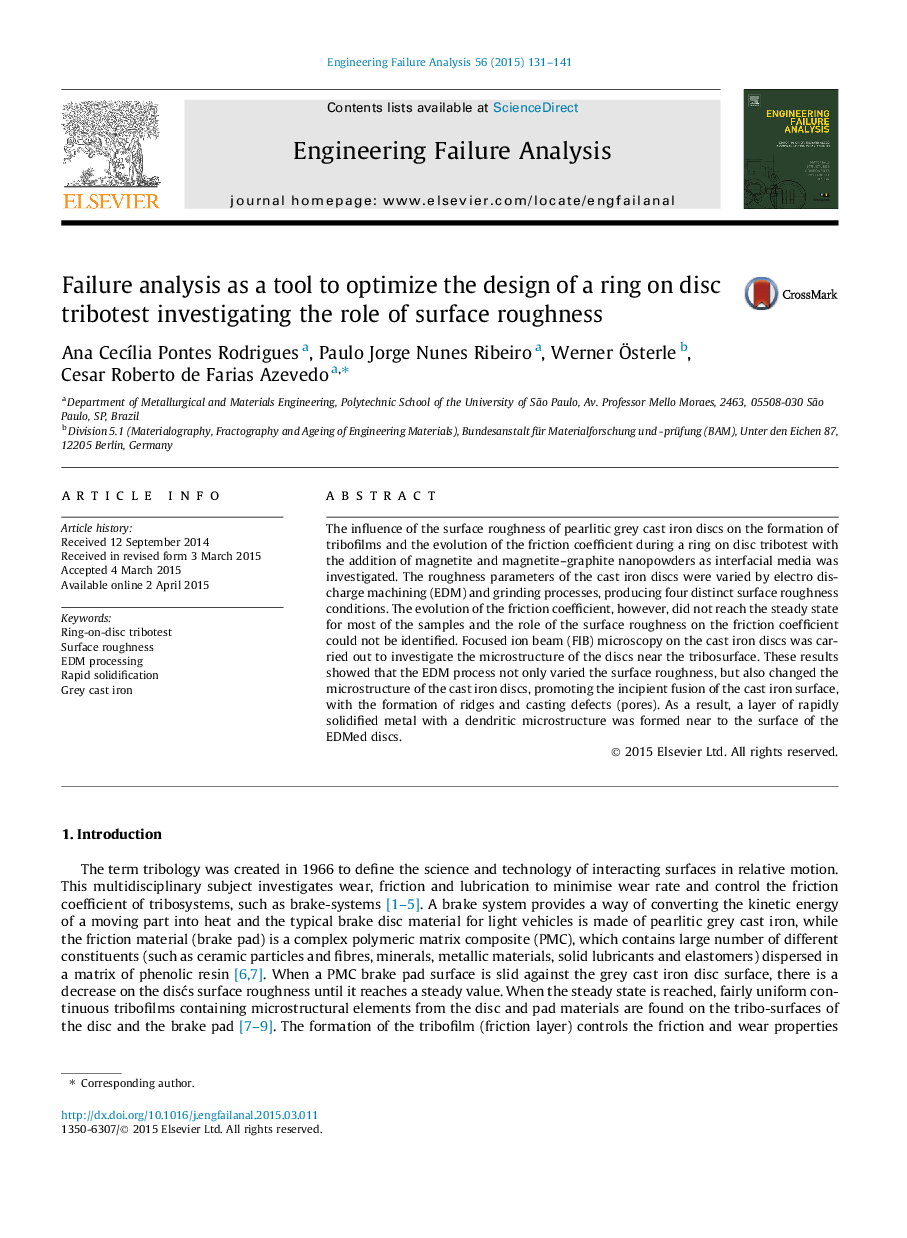| Article ID | Journal | Published Year | Pages | File Type |
|---|---|---|---|---|
| 768284 | Engineering Failure Analysis | 2015 | 11 Pages |
•The influence of surface roughness of grey cast iron on friction was investigated.•Electro discharge machining (EDM) was used to produce diverse topographies.•The role of surface roughness on friction coefficient could not be determined.•EDM process promoted the incipient fusion of the grey cast iron surfaces.•A layer with dendritic microstructure was formed on the surface of EDMed discs.
The influence of the surface roughness of pearlitic grey cast iron discs on the formation of tribofilms and the evolution of the friction coefficient during a ring on disc tribotest with the addition of magnetite and magnetite–graphite nanopowders as interfacial media was investigated. The roughness parameters of the cast iron discs were varied by electro discharge machining (EDM) and grinding processes, producing four distinct surface roughness conditions. The evolution of the friction coefficient, however, did not reach the steady state for most of the samples and the role of the surface roughness on the friction coefficient could not be identified. Focused ion beam (FIB) microscopy on the cast iron discs was carried out to investigate the microstructure of the discs near the tribosurface. These results showed that the EDM process not only varied the surface roughness, but also changed the microstructure of the cast iron discs, promoting the incipient fusion of the cast iron surface, with the formation of ridges and casting defects (pores). As a result, a layer of rapidly solidified metal with a dendritic microstructure was formed near to the surface of the EDMed discs.
